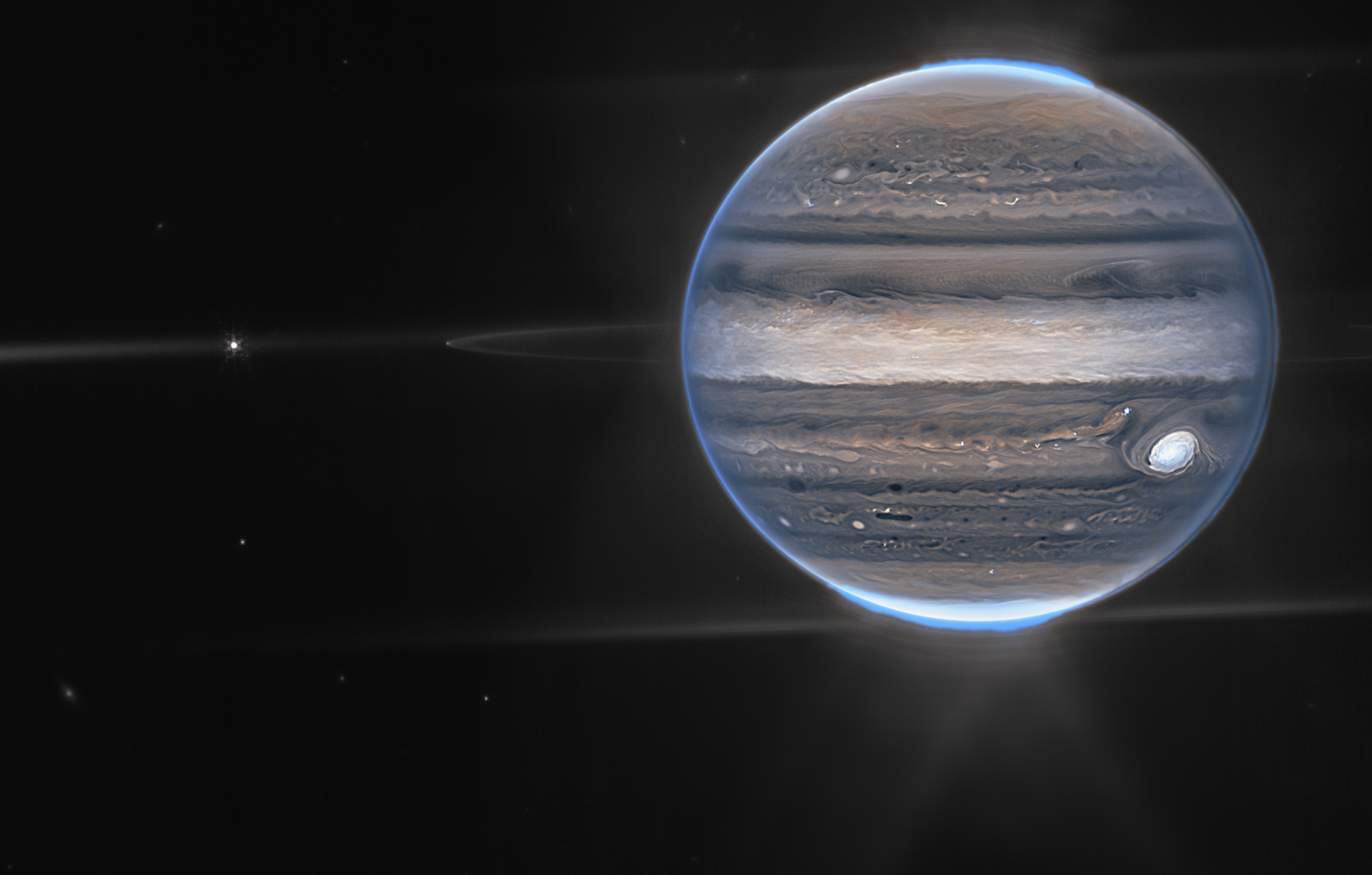

It’s not surprising that Jupiter has a lot going on at its surface. According to NASA, if the Earth were a the size of a grape, the mighty Jupiter would be the size of a basketball. Now, NASA has “giant news from a giant planet.” The James Webb Space Telescope has sent back stunning new images of the fifth planet from our sun, giving scientists a better insight at the inner workings of the gas planet.
“We hadn’t really expected it to be this good, to be honest,” said planetary astronomer Imke de Pater, professor emerita of the University of California, Berkeley, in a statement. “It’s really remarkable that we can see details on Jupiter together with its rings, tiny satellites, and even galaxies in one image,” she said. DePater led the observations with the Paris Observatory’s Thierry Fouchet as part of an international collaboration for Webb’s Early Release Science program. The Webb mission itself is an international space mission led by NASA with its partners ESA (European Space Agency) and CSA (Canadian Space Agency).
The two photos were taken on July 27 and are composites from several images from taken by Webb’s Near-Infrared Camera. This camera has special infrared filters that can showcase the details of the planet unlike any before it. Infrared light is invisible to the human eye, so the images were colored in to translate them into the visible spectrum and make Jupiter’s features stand out, according to NASA.
[Related: Jupiter’s largest moon wrestles for attention with its Big Red Spot.]
A wide-field view of the new images show the faint rings of Jupiter with its faint rings and two small moons named Amalthea and Adrastea. “This one image sums up the science of our Jupiter system program, which studies the dynamics and chemistry of Jupiter itself, its rings, and its satellite system,” said Fouchet.
The standalone view of Jupiter was also created from a composite of several images from Webb. In it, auroras are present at both high altitudes above both the northern and southern poles of Jupiter, just like they are on Earth. A red filter highlights the auroras, yellows and greens highlight the various hazes swirling around the planet’s northern and southern poles, and blue filters show the light reflected from a deeper main cloud.

The images also show one of Jupiter’s defining characteristics: the Great Red Spot. It appears white in these photographs since it’s reflecting sunlight, according to NASA. The Great Red Spot is a giant storm bigger than our entire planet and has been raging for centuries.
“The brightness here indicates high altitude–so the Great Red Spot has high-altitude hazes, as does the equatorial region,” Heidi Hammel, Webb interdisciplinary scientist for solar system observations and vice president for science at AURA noted in a statement. “The numerous bright white ‘spots’ and ‘streaks’ are likely very high-altitude cloud tops of condensed convective storms.” By comparison, the dark ribbons north of Jupiter’s equatorial region have little cloud cover.
[Related: Jupiter formed dinky little rings, and there’s a convincing explanation why.]
NASA credits the citizen science community for their role in helping astronomers process these images. Modesto, California’s Judy Schmidt processed these new views of Jupiter. A longtime image processor in the citizen science community, she collaborated with Ricardo Hueso, a co-investigator on these observations who studies planetary atmospheres at the University of the Basque Country in Spain.
Despite having no formal background in astronomy, Schmidt’s passion for astronomical image processing was sparked by the ESA’s Hubble’s Hidden Treasure contest in 2012. The competition called for the public to find new gems buried in decades of Hubble data. Schmidt took home third place out of nearly 3,000 submissions for her image of a newborn star.
She has continued to work with Hubble and other telescope data as a hobby. “Something about it just stuck with me, and I can’t stop,” she said in a statement to NASA. “I could spend hours and hours every day.”
